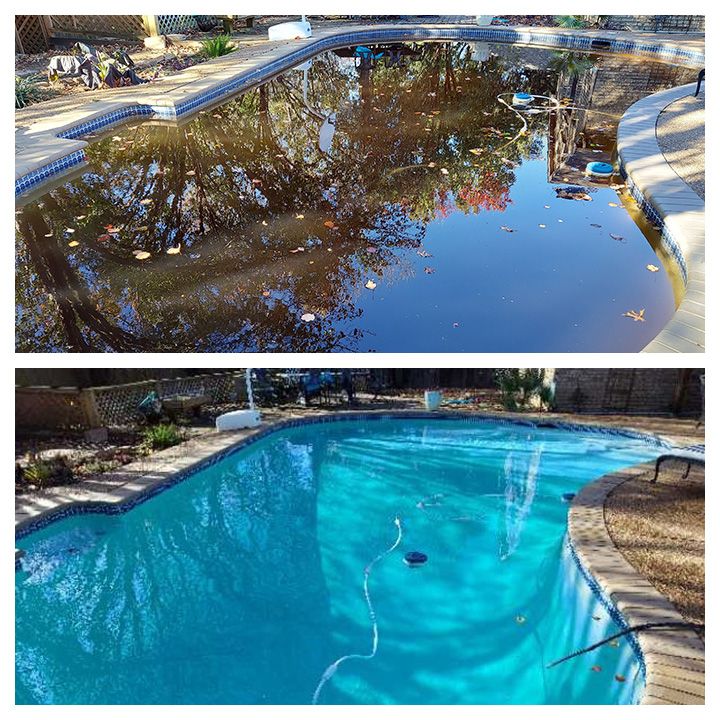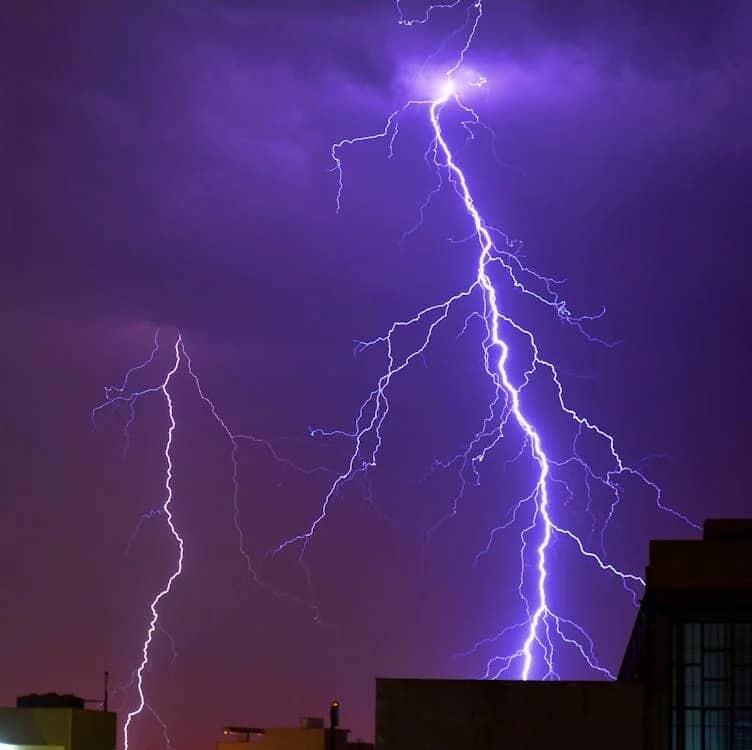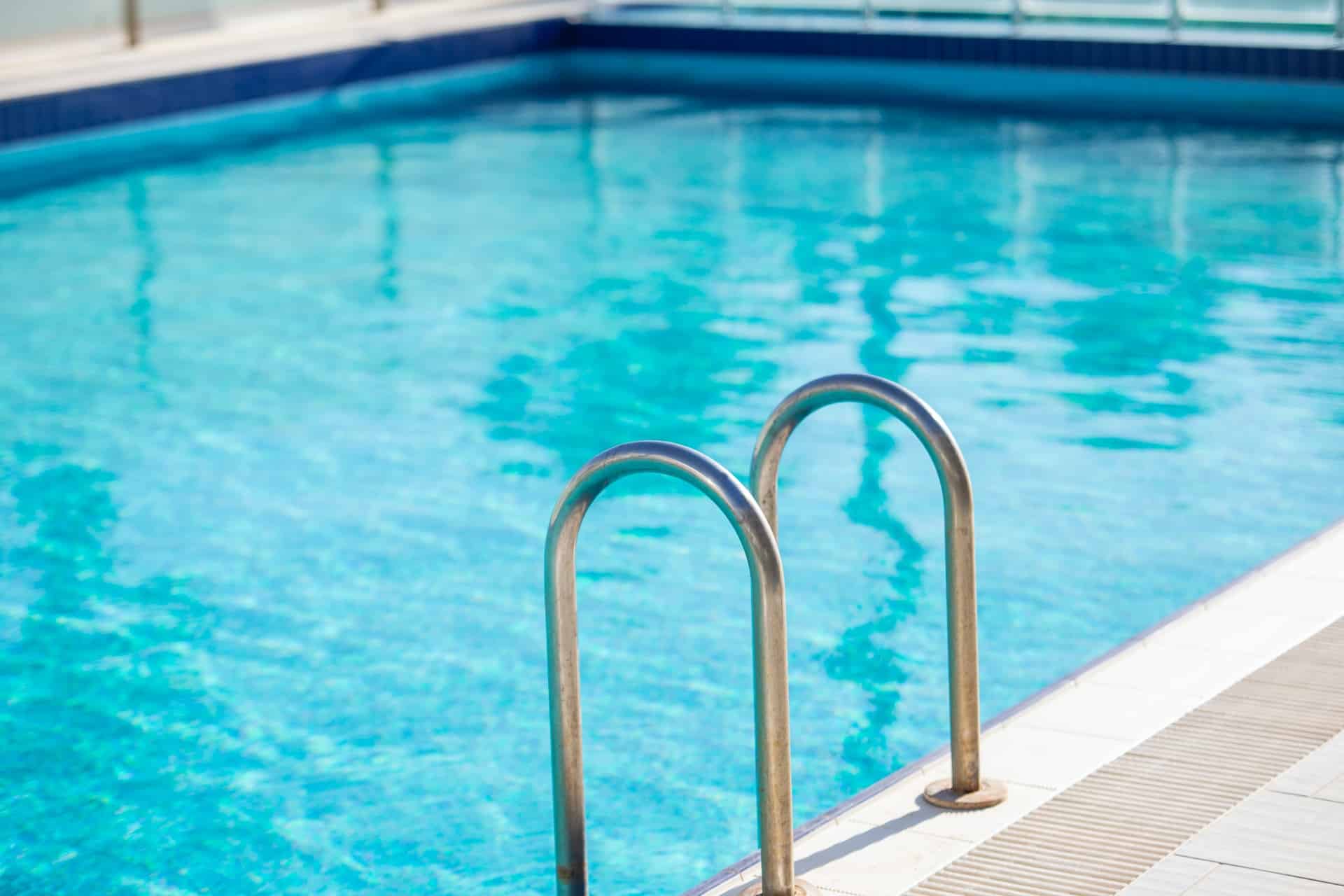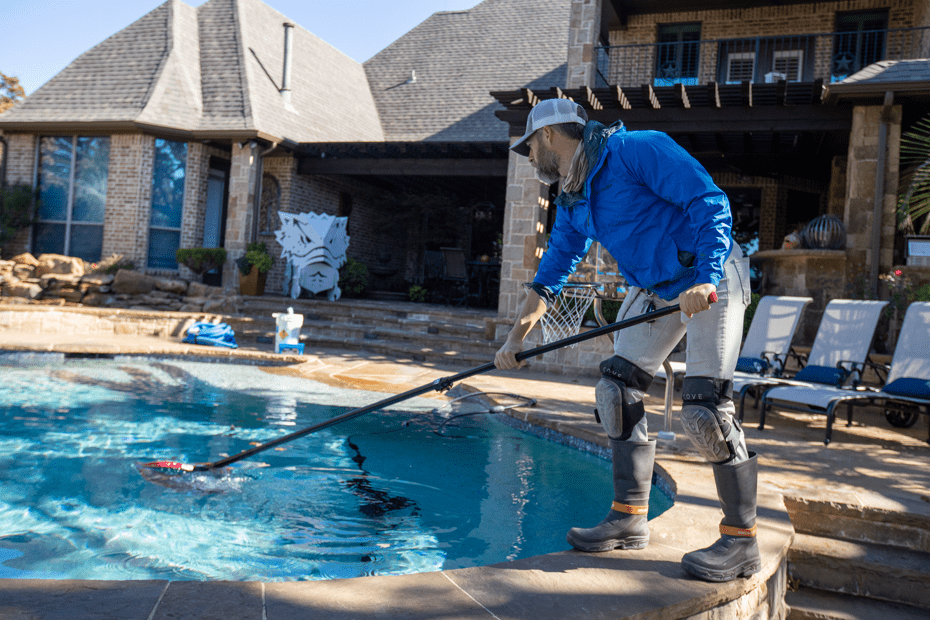Serving Florida & Texas Since 1987

How to Troubleshoot Common Pool Problems
Pool maintenance is not a one-size-fits-all job. Our technicians have to treat each pool differently based on a long list of factors that affect your water chemistry and equipment. By understanding these factors, we can anticipate potential issues and address them early, keeping our clients’ pools clean and safe all year long.
Common Pool Issues & How to Troubleshoot Them
Algae Overgrowth
Cause: Low chlorine levels allow algae to thrive and grow in your pool, turning the water green and cloudy. Poor pool circulation and filtration can also contribute to algae overgrowth.
Solution: Manually clean your pool, balance the water, and then add shock.
- Vacuum the bottom of your pool to get rid of sediment and prevent it from recirculating through your filtration system.
- Use a brush to loosen algae that is clinging to the pool walls and floor.
- Before adding pool shock, test and balance the water alkalinity and pH levels.
- Add shock to sanitize the water. The amount of shock you need depends on the type of algae (green algae is the easiest to kill, black algae is the toughest).
- Remove the dead algae by running the pool filter until the water is clear.
Limited Circulation
Cause: Poor water circulation in your pool typically happens because your pool skimmer basket, pool filter, or pool pump need to be cleaned. You can also have circulation problems if your water level is too low to reach the skimmer, or if you aren’t running the pool pump long enough. If none of these factors are the cause, your pool pump could be malfunctioning and need repairs.
Solution: Make sure your skimmer baskets, pool filter, and pool pump are free of debris. If the water level is low, refill the pool so that it is halfway up the skimmer opening. If these steps don’t resolve the issue, call your local pool company. Your pump could be the wrong size for your pool, or there is a mechanical problem that should be fixed by a pool technician.
Excessive Chlorine
Cause: Chlorine is an essential part of pool maintenance because it kills bacteria and viruses in the water – but you can bring chlorine levels too high if you’ve added too much shock to the pool. Too much cyanuric acid (CYA) in the water can also cause “chlorine lock”, which stops chlorine from being burned off by UV rays.
Solution: There are multiple ways to lower the chlorine levels in your pool.
- Turn off and remove any chlorine dispensers. Stop adding chlorine to the pool until the levels go back down.
- Dilute the pool by adding fresh water.
- Let UV rays from sunlight burn off the chlorine. Just be sure there isn’t too much cyanuric acid, which inhibits this process.
- Add hydrogen peroxide or a chlorine neutralizer to react with the chlorine.
Cloudy Water
Cause: Cloudy water is commonly caused by a clogged pool filter or off-balance water chemistry. Contamination from algae, germs, pollen or other outdoor debris can also create cloudy water.
Solution: The way to clear up a cloudy pool will depend on the cause. Here are some pool troubleshooting steps you can take to resolve the issue:
- Test the water chemistry: Chemical imbalances are an extremely common cause for cloudy water. You may need to readjust the chlorine, pH, alkalinity, or calcium levels.
- Check the pool filter: If the chemistry levels are balanced and the water is still cloudy, poor filtration may be the cause. Check the filtration system for clogs and debris, and give the filter a good rinse if it hasn’t been cleaned in a while.
- Use a pool clarifier or flocculant: Some contaminants can make your water cloudy even if the chemistry is balanced and the filter is working. These contaminants could be environmental (e.g. dirt, leaves, pollen, bugs, bird droppings, fertilizers) or come from swimmers (e.g. sunscreen, skin cells, skin and hair products) and are too small to be picked up by the filtration system. Adding a clarifier or flocculant will make these particles clump together, allowing you to remove these contaminants with the pool filter or a pool vacuum.
Clogged Pool Filter
Cause: A clean pool filter does a great job at catching particles while letting water circulate through the system, but over time it will gradually clog up with debris that makes it harder for water to pass through.
Solution: Pool filter cartridges should be cleaned a few times a year in order to work effectively. If your filter gets clogged very quickly, there may be other factors at play:
- You may be dealing with pool algae or excessive debris in the water.
- If you use a sand filter, you may be using the wrong grade of sand or the sand level needs to be adjusted.
- If you have a DE (Diatomaceous Earth) filter, you may have added too much DE.
- Your filter may be too small for your pool.
- A part of your filtration system may be damaged and need repairs.
Skin and Eye Irritation
Cause: When ammonia gets into pool water and interacts with chlorine, it creates chloramines which irritate the skin and eyes. Ammonia can get in your pool water from fertilizers, decaying plant matter, and urine – among other things.
Solution: Add pool shock to break down chloramines in the water. In order to achieve breakpoint chlorination, there needs to be 10x more free chlorine in the water than the amount of chloramines.
Cracks in the Pool
Cause: Structural damage to a pool is often the byproduct of bad workmanship or low-quality building materials. Poorly-compacted soil around the pool and ground movements (e.g. earthquakes, freezing groundwater) are common causes of structural cracks.
Solution: Structural cracks can be complicated to repair and should not be DIYed. Call your local pool contractor to inspect the damage and perform professional repairs.
Calcium Buildup
Cause: The most common type of mineral buildup in pools is calcium carbonate (CaCO3), a white, flaky scale that appears when water is oversaturated with calcium. Scale is more likely to form when your pool water’s temperature and/or pH are too high.
Solution: To get rid of calcium carbonate scale buildup, you will first need to scrub the scale off your pool tiles, concrete, or plaster surfaces. The most effective way to do this is to drain and acid wash your pool. For small-scale and DIY jobs, you can physically remove calcium buildup with vinegar and a pool brush, pumice stone, or stain eraser.
Pool Stains
Cause: Pool staining usually comes from trace metals or organic matter in your pool water – for instance, iron can create red staining, copper can create blue-green stains, and greenish-brown stains can come from plant matter.
Solution: Organic stains can often be removed with chlorine, so pool shock should do the trick. However, metallic stains will not react to chlorine. For spot treatments, you could use ascorbic acid (i.e. vitamin C) to remove rust staining and citric acid to help scrub away copper stains. For all-over stain removal that will make your pool look like new, acid washing is your best option.
Understanding How Warm Texas Weather Impacts Your Pool
In order to provide the high-quality service that Patriot Pool & Spa is known for, we pay close attention to how the local climate impacts your pool.
The biggest impact that living in Texas will have on your pool is exposure to high daily temperatures for most of the year. Hot weather means warmer water, which affects your pool chemistry and requires more attention to maintain a safe swimming environment.
Bacteria and Algae Growth: Bacteria and algae in your pool water thrive in warmer temperatures, even if your chlorine levels are perfectly balanced. To keep microorganisms in check, you will need to add more chlorine than you would in the off season. You may even need to shock the pool and use algaecide on a weekly basis in order to keep algae blooms under control.
Chlorine Demand: Chlorine breaks down as it kills off microorganisms in the water – but it’s also burned off by UV rays. As your pool gets warmer, bacteria grow faster, eating away at your free chlorine levels at a quicker rate. At the same time, UV rays from the sun can burn away your chlorine within a matter of hours if it isn’t stabilized with enough cyanuric acid (CYA). You could end up using twice as much chlorine in the summer compared to winter because of these factors.
pH Balance: Pool pH will naturally rise when swimmers are in the water more often, wherever new chemicals are added to the water, and when temperatures warm up – all things that happen in the summer. You should test and balance your water on a weekly basis at the very least in order to keep your pH in a safe range.
Calcium Buildup: Warmer temperatures can raise calcium hardness in pool water. Calcium is more soluble in low temperatures, and it will solidify when the temperature increases. This creates a flaky scale that can build up on surfaces and make your water look cloudy. You will have to monitor water hardness more closely in the summer.
Patriot Pool & Spa is the Solution: Your Professional Pool Services Provider in Texas
Maintaining a pool is a constant balancing act that requires careful attention and accurate diagnostic skills. Weekly cleaning and chemical balancing is the key to avoiding the common pool problems that jeopardize the safety and cleanliness of your pool.
Scheduling weekly pool services with Patriot Pool & Spa will keep your pool crystal clear while saving you time and energy to use on the things that matter most. Our pool technicians are thoroughly trained, insured, and background checked to provide easy, safe, and effortless results that you can count on all year round. Contact us today to start making your life easier!



